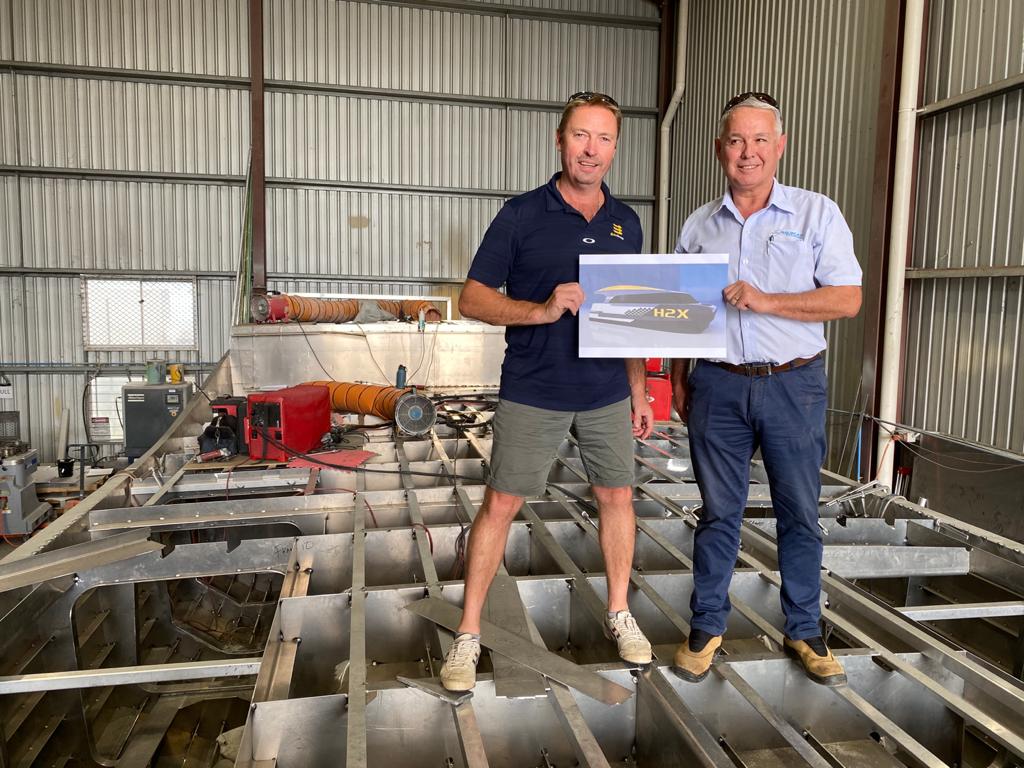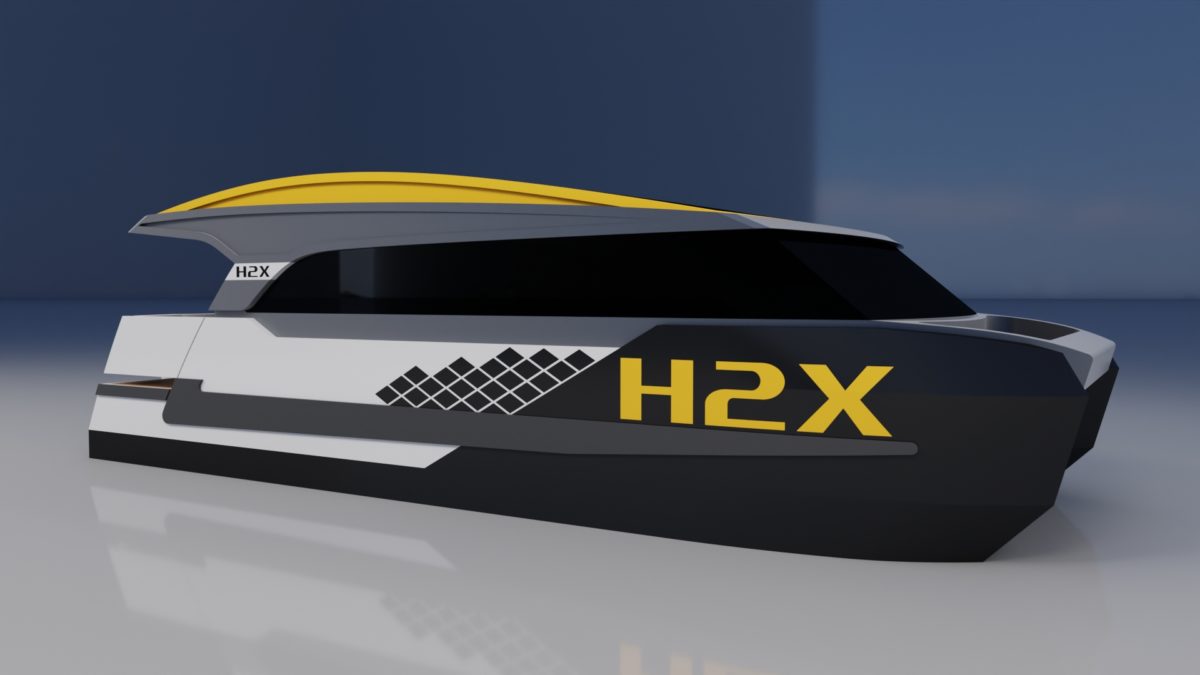H2X Marine, the new boat building arm of fledgling automotive manufacturer H2X Australia, has partnered with Queensland-based ship building specialist WildCat Marine to manufacture a range of zero-emission, hydrogen-fuelled passenger ferries for industrial and commercial use.
H2X Marine CEO Sam Blackadder said construction on the first of the ferries had already begun with the company to access the Fuel Cell Electric Vehicle (FCEV) technology developed by H2X Australia as part of their automotive design process. The first of the ferries, the Maroochy, is set to be launched in early 2021.
“We have commenced construction and we will employ up to 40 boat builders and hydrogen drivetrain specialists when we reach production capacity,” Blackadder said.

Image: H2X Marine
The announcement comes in the wake of Queensland Premier Annastacia Palaszczuk’s creation of a ministry for hydrogen in her new government.
In an Australian first, Palaszczuk appointed the nation’s first dedicated minister for hydrogen, with Mick de Brenni named as the minister for energy, renewables and hydrogen when she unveiled her new Cabinet this week.
The appointment is the latest in a raft of recent hydrogen-related announcements throughout Australia – including the South Australian Government tipping in $37 million for the upgrade of the $240 million Eyre Peninsula Gateway Hydrogen Project – and reinforces the nation’s determination to lead the global race for a hydrogen economy.
Blackadder said the first of the H2X Marine ferries will comprise an aluminium hull, have 50-passenger capacity and will be fitted with two 120 kW electric powertrains driven by Hydrogen Fuel Cell (HFC) technology.
Blackadder said the aim is to manufacture up to 30 ferries at the company’s Brisbane factory to take advantage of a passenger ferry market worth an estimated $3.5 billion globally and growing at more than 3.4% a year
“We will also be building a range of larger vessels right down to smaller recreational craft and this will include providing retrofit facilities for existing marine craft,” he said.
“Australia stands at the forefront of the future hydrogen economy … I strongly believe we have to lead by example and not wait for other countries to pave the way.”
H2X Marine chairman Craig Elvin said the company had until now “been operating very much in stealth mode” but with construction having commenced on the first of the ferries, it is now seeking letters of intent from potential customers.
“We are making a significant capital investment in this new industry because we firmly believe that the use of green hydrogen is the fuel to drive Australia’s industry as we phase out fossil fuels,” he said.
H2X Australia CEO Brendan Norman said the marine operation would benefit from the experience of the parent company “which gives great advantage over other manufacturers new to this market space”.
H2X Australia earlier this year announced plans to roll out two hydrogen-fuelled commercial vehicles on the Australian market in 2021 and also released details of a hybrid electric plug-in and hydrogen-fuelled passenger SUV which is scheduled for production in 2022.
The Port Kembla-based company is also part of the Green Hydrogen Australia Group (GHAG) which is developing the $300 million Bundaberg Hydrogen Hub (BHH) in central Queensland.
The BHH, announced in September, will comprise an 80 MW hydrogen electrolyser with Blackadder saying an adjacent solar farm, set to power the electolyser, is likely to have a capacity of 100 MW.
This content is protected by copyright and may not be reused. If you want to cooperate with us and would like to reuse some of our content, please contact: editors@pv-magazine.com.









By submitting this form you agree to pv magazine using your data for the purposes of publishing your comment.
Your personal data will only be disclosed or otherwise transmitted to third parties for the purposes of spam filtering or if this is necessary for technical maintenance of the website. Any other transfer to third parties will not take place unless this is justified on the basis of applicable data protection regulations or if pv magazine is legally obliged to do so.
You may revoke this consent at any time with effect for the future, in which case your personal data will be deleted immediately. Otherwise, your data will be deleted if pv magazine has processed your request or the purpose of data storage is fulfilled.
Further information on data privacy can be found in our Data Protection Policy.